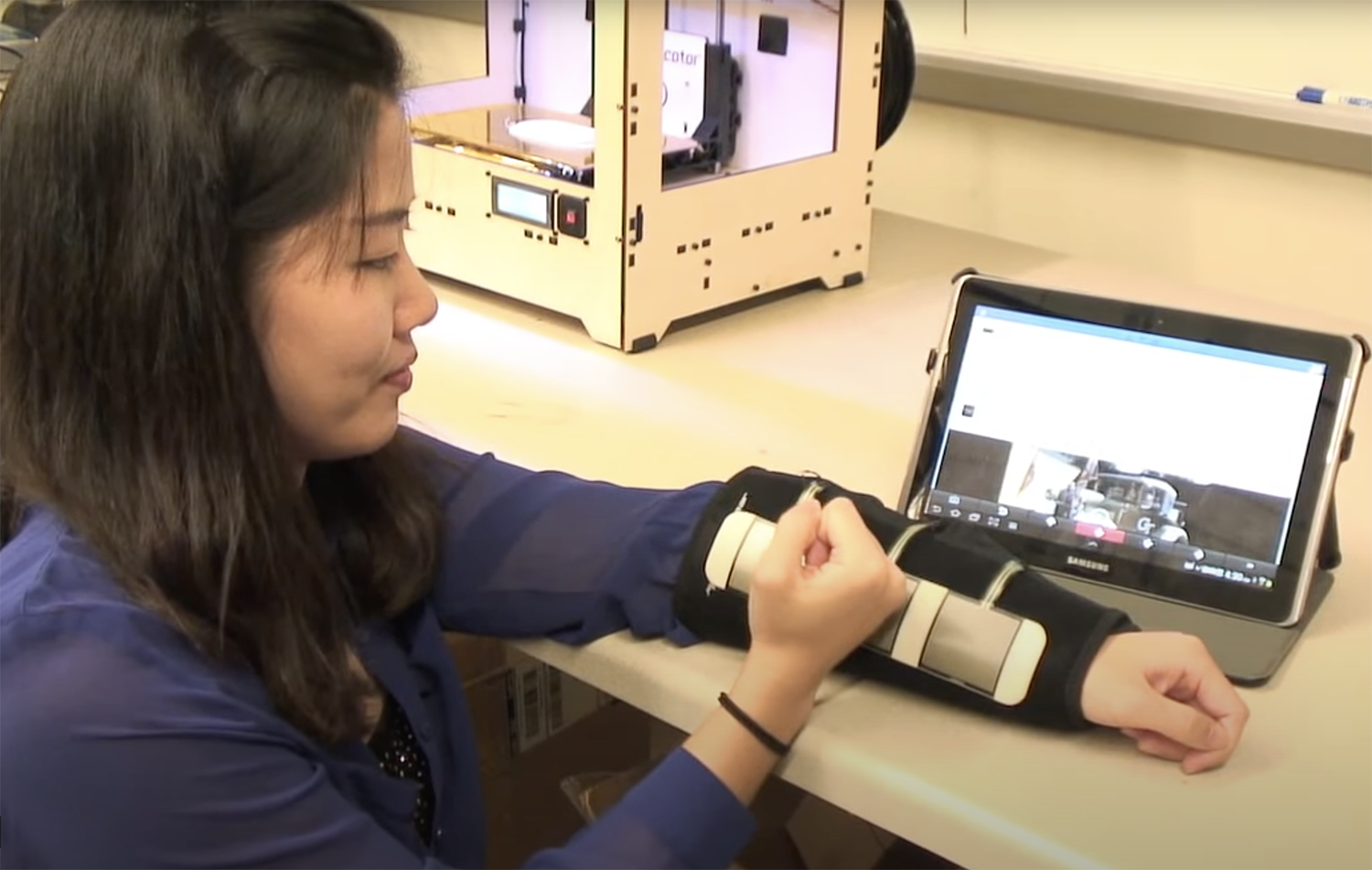The innovative TabAccess sleeve is a wearable device that makes tablet applications requiring touching, pinching, or swiping a small area with specific intensity and timing accessible to individuals with limited upper body motor control, such as pediatric cerebral palsy patients or patients recovering from a stroke. Georgia Tech’s wireless device translates gross motor gestures into touch screen-based signals by converting raw sensor data retrieved from the sensors into press and swipe inputs. The device recognizes different gestures generated by a combination of sensors with hidden Markov models. The technology includes a supporting application software library that enables the delivery of effective education and entertainment opportunities for individuals lacking fine motor skills. It runs on devices running both iOS and Android operating systems.
- Enabling: Provides an alternative interface to touchscreen-based devices for people with limited fine motor control, potentially enabling them to interact with applications that could improve their quality of life or even create employment opportunities
- Reconfigurable: Sensor modules can be interconnected as well as separated and mounted anywhere (e.g., on the human body or on a table, floor, wheelchair, etc.), enabling adaptation of the device based on the capability, range of access, and the individual’s range of motion.
- Adjustable: Uses an adjustable Velcro strap so one size fits the majority of forearms
- Wireless connectivity: Can transmit data amongst the sensor modules as well as with the mobile device (tablet/cell phone)
- Variable input: Adjusts to variability in human presses with sensor modules that read force pressure
- Software ecosystem: Includes a software ecosystem that provides the communication protocol between the sleeve and Android devices for future application development
- Sensitive: Design allows operation even if worn underneath clothing.
- Feedback: Embedded piezo-electric sensors vibrate in response input to provide feedback to the user.
- Versatile: Can be connected to other switch devices and joystick inputs, providing the same functionality (including reconfiguration and wireless connectivity) as when using the force pressure inputs
This device is beneficial for individuals who have difficulty affecting the common pinch and swipe gestures required for touch screen-based interactions, such as persons with:
- Stroke
- Traumatic brain injuries
- Cerebral palsy

The TabAccess device.

The TabAccess sleeve in use with a tablet.
